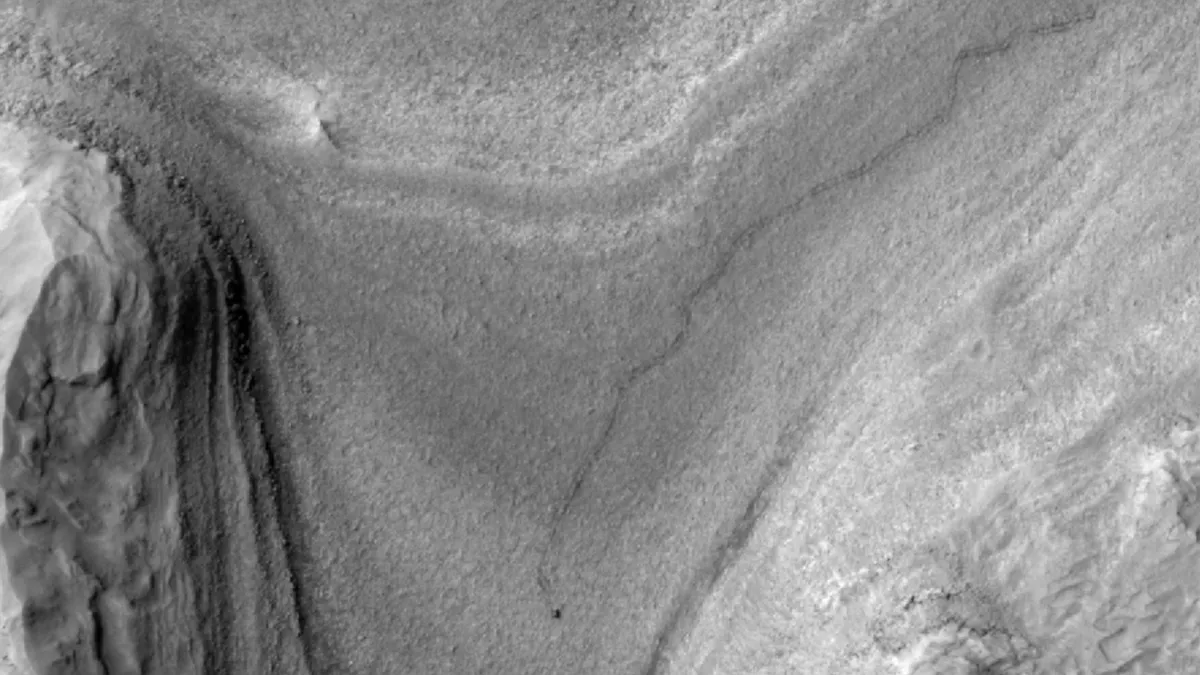
Nasa's Mars Reconnaissance Orbiter (MRO) has achieved a remarkable milestone by capturing a stunning off-Earth image that showcases action on the Red Planet. On February 28, 2023, the MRO's HiRISE (High-Resolution Imaging Science Experiment) camera documented a groundbreaking moment: NASA's Curiosity rover in motion across the expansive Gale Crater on Mars. This incredible photograph marks the first time the Curiosity rover has been photographed mid-drive from orbit, a significant advancement in our understanding of Martian exploration.
Previously, MRO had observed the Curiosity rover in stationary positions, making this new image a historic first. NASA officials announced this exciting development in a statement released on April 24, highlighting the importance of the image in showcasing the rover's journey across the Martian landscape.
The stunning HiRISE image reveals rover tracks spanning approximately 1,050 feet (320 meters), which are expected to remain visible for several months until the Martian winds eventually erase them. The tracks represent roughly 11 distinct drives that began on February 2, as Curiosity navigated at a leisurely pace of 0.1 mph (0.16 kph). The rover's journey is part of a larger mission to reach its next scientific destination, an area believed to contain unique boxwork formations that may have been created by ancient groundwater billions of years ago.
Since landing on the floor of the 96-mile-wide (154 km) Gale Crater in August 2012, the Curiosity rover has been on a mission to study the region's past potential to support life. The rover's findings have captivated astrobiologists, revealing that Gale Crater once harbored a long-lived lake-and-stream system that provided essential ingredients for life. Additionally, Curiosity has discovered a potential chemical energy source capable of sustaining microbial metabolism, further underscoring the area's habitability in ancient times.
The recent HiRISE image of the Curiosity rover in motion not only represents a technological achievement but also enhances our understanding of Mars' geological history. As the rover continues its exploration, it provides valuable data that aids scientists in piecing together the planet's past and its capacity to support life. This milestone emphasizes the critical role of Mars exploration in our quest to understand the universe and the potential for life beyond Earth.